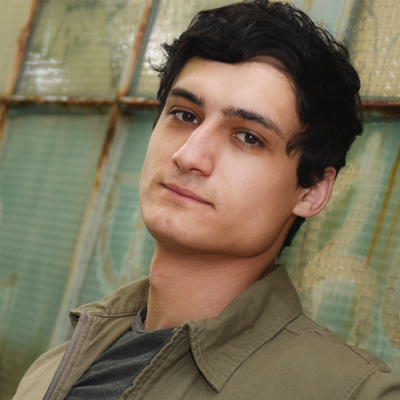Culturally sensitive food, venting sessions about toxic masculinity, and a magazine about intersectionality are among the many DEI initiatives taxpayers are funding at British Columbia’s wokest prison.
Prisoners at William Head Institute in Metchosin, B.C., have the opportunity to create mandalas, vent about how they’re victims of intergenerational trauma, and join the “Ethnocultural Book Club” – all in the name of “restorative justice.”
“The Correctional Service of Canada is committed to diversity, equity, and inclusion in its operations,” the department’s media relations spokesperson Lucinda Fraser told True North.
“At William Head Institution, there are a number of initiatives, which include partnerships with community partners, which work to support these efforts, including an Ethnocultural Book Club, an ethnocultural day of celebration, a Mandala Workshop, as well as a Food Box Program.”
The Correctional Service of Canada confirmed to True North that it spent approximately $57,000 on a series of group discussion sessions for federal prisoners to talk about racism, sexism, ableism and microaggressions, among other topics, “to promote safer communities by providing inmates with a greater understanding of important issues and further preparing them for potential release into the community when it is safe to do so.”
Inmates at the William Head Institution are also publishing an annual magazine focused on the topic of intersectionality – a social theory invented by black feminist scholar Kimberle Crenshaw.
The minimum security prison is located about 25 kilometres away from Victoria. Nearly 50% of the inmates serving time there serve life sentences, including for murder.
A core component of the DEI programming was the INTERSECTIONS magazine, which the prison runs in partnership with the Nanaimo African Heritage Society. Prisoners from other federal institutions also took part in contributing to the publication.
Psychologist Lisa Gunderson, who heads the magazine, wrote that it shields inmates “from the raindrops of inequities and the perpetuation of systemic mental, spiritual, emotional and physical violence.”
“It further motivates us to engage in the fight to promote social and racial injustice,” wrote Gunderson.
One inmate, who goes by the pseudonym “Tamrat,” wrote of the prison’s educational bulletins on slavery showed “how fortunate we are to be residing in such a progressive correctional institution: in an institution where diversity is actively promoted; in an institution that fosters a living environment conducive to minority well-being; and in an institution that walks the talks of inclusivity by candidly acknowledging even the not-so-glamorous truth in our history.”
Tamrat called William Head a “mecca for diversity and inclusion.”
Another inmate known as “T.D.T” from the medium security Springhill Institution in Atlantic Canada wrote an article about how he was the “victim of intergenerational trauma.”
“Intergenerational trauma is systemic. I myself am a victim of intergenerational trauma. The truth is, most people think Blacks living in the ghettos and natives living on reserves are shitty parents. Fact is, we’re not being given what’s ours,” wrote T.D.T.
The magazine also explained how inmates are treated to “reasonable accommodations” of ethnocultural food items including samosas and Eritrean dishes such as injera, a fermented flatbread.
“Samosa is one of the items that has recently been added to the institutional canteen in order to meet the needs of ethnocultural residents at William Head Institution,” the magazine reported. “Samosa is a South Asian snack consisting of a thin pastry case filled with spiced vegetables or meat and then deep-fried.”
In the 2023 issue, Tamrat lauded the prison grocery store for meeting “the needs of diverse ethnocultural residents very well” with an “amazingly well-assorted grocery items and spices.”
“Thanks to the genuine and assiduous ethnocultural advocates, staff and management of William Head Institution, the right ingredients for preparing injera bread are now available at the institutional canteen,” wrote Tamrat. “Experiencing the taste of authentic injera bread for the first time after more than a dozen years was incredibly emotional for me.”
Inmates were also provided with “cultural food boxes” as an accommodation. “Included in every box will be self-cook recipes complete with authentic ingredients as well as additional recipes and country fact sheets,” wrote the William Head Institute.
Furthermore, convicts were allowed to take part in a mandala-making project with Haitian artist Mayouba Divi.
“Through the creation of art on hangers individually, we had an opportunity to express our unique life stories of adversity, hardship and triumph,” wrote the prisoners.
The publication is rife with poems, essays and musings on woke themes such as colonialism, anti-hate activism, gender identity and Black Lives Matter.
William Head inmate Michael wrote an essay on the gender binary.
“Inform yourselves. Talk with an open mind to anyone who is gender non-conforming. We are all unique, each with different trains,” he wrote. “The LGBTQ2S+ community has a Pride Movement. You should take pride in being a person who has conquered your own prejudices and phobias.”
William Head Institution has even installed a “Progressive Pride Sidewalk” out front to “represent our diversity.”
“Our goal with the Progressive Pride Sidewalk was to help everyone to feel valued for your individual diversity and create meaningful conversation where we can all share and learn from each other,” wrote WIlliam Head Institute.
Inmates also took part in two pilot programs over the past few years called the “Makin’ It Real Group” and the “Keepin’ It Real Group.”
Both programs were composed of 10-sessions including sessions on “racism, sexism ableism” and “bullyism.” Inmates also got an opportunity to discuss “power and privilege” and “disrupting micro-aggressions.”
